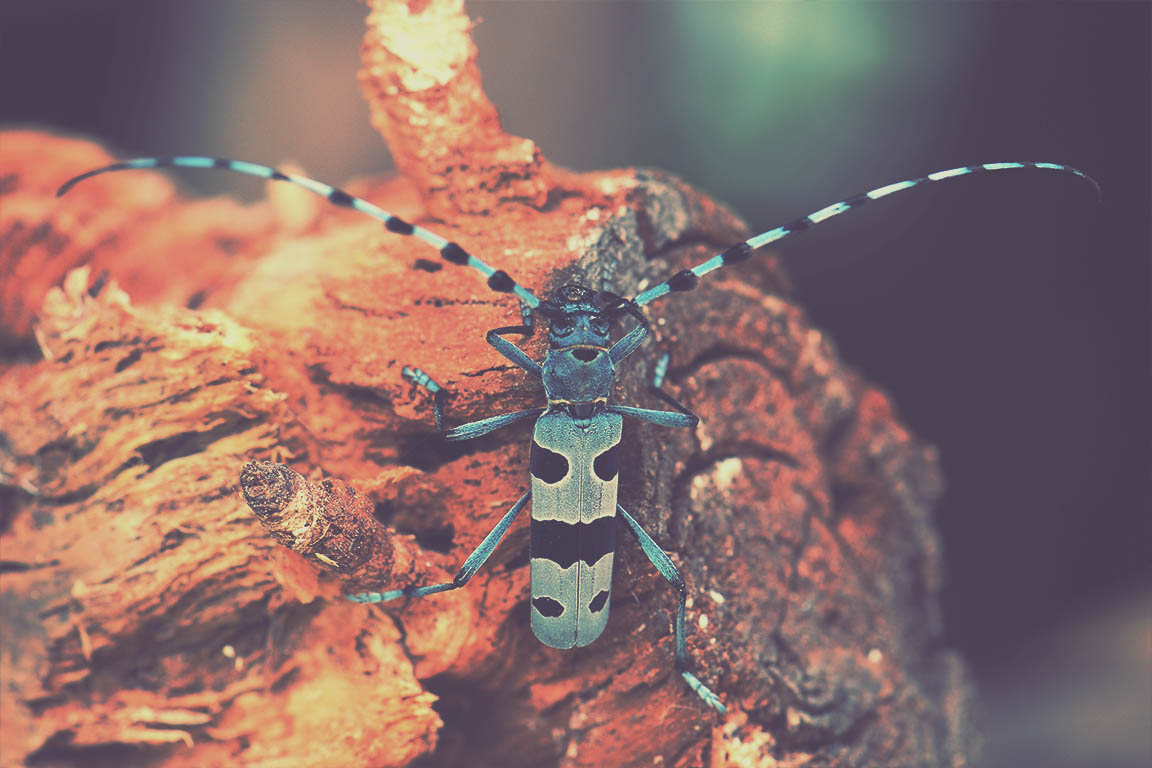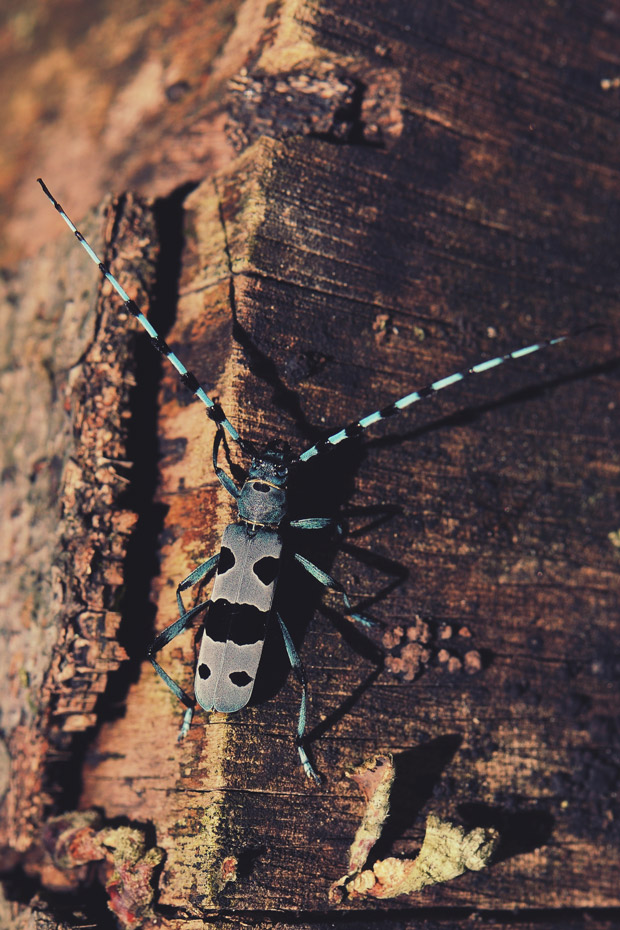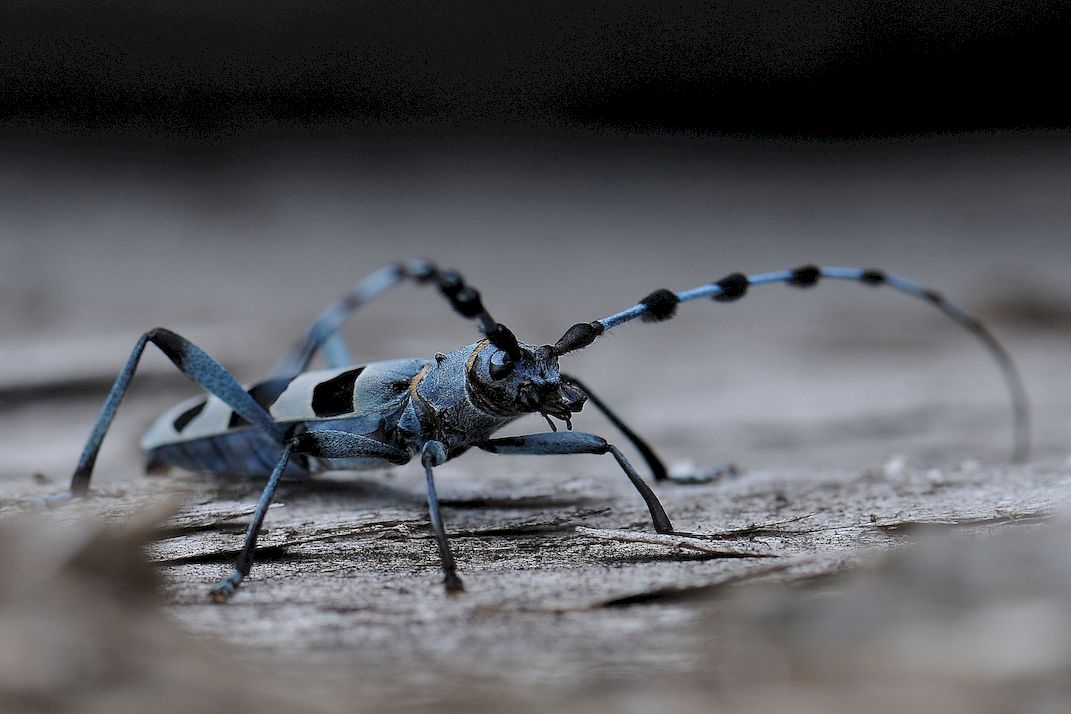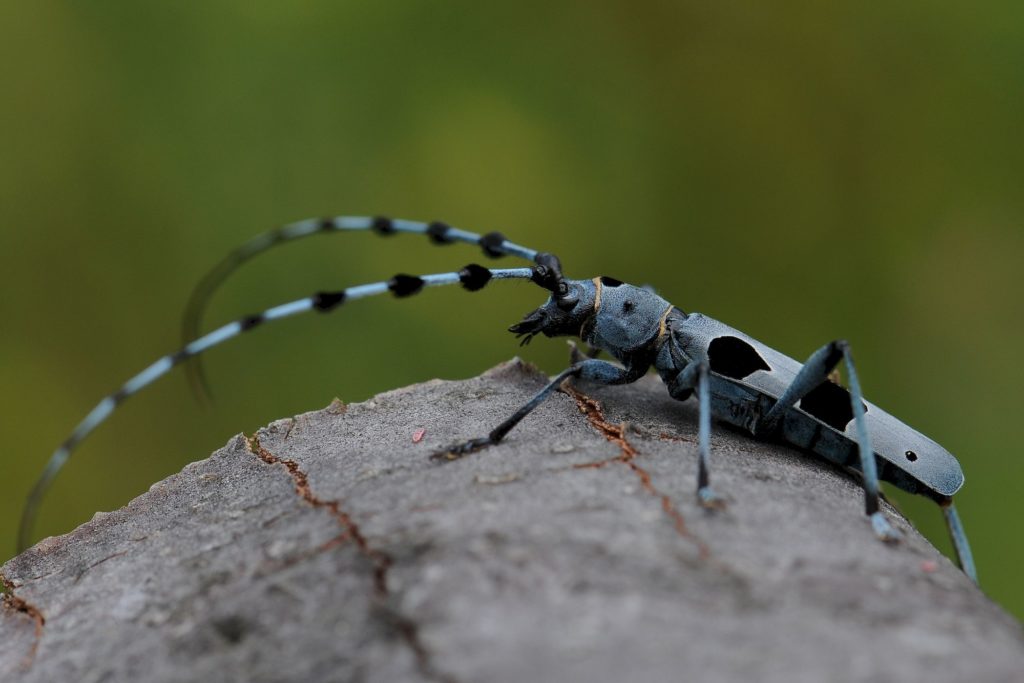The nature of the Carpathian Mountains is characterised by high biodiversity, therefore the area plays a very important role in the protection of various types of natural habitats and many species of plants and animals. Among the insects occurring in the Carpathians, there is a very interesting group are beetles, among which about 100 endemic species were found, i.e. the ones occurring only in this area.
In most cases, this is due to the specific ecological requirements and small tolerance of environmental factors and the low mobility of these organisms. Examples of such endemic Carpathian beetles is Pseudogaurotina excellens from Cerambycidae and Carabus Zawadzkii, Carabus obsoletus and Carabus sylvestris transsylvanicus, representatives of Carabidae. In addition to endemic species, the Carpathians are home to a large number of rare but more widely spread species, also known from other regions of Poland and Europe. Rosalia longicorn (Rosalia alpina), Carabus variolosus, Cucujus cinnaberinus, Rhysodes sulcatus and Boros schneideri are examples of species that find very favourable conditions for their development in the Carpathians.
The 4-cm Rosalia alpina
The Rosalia alpina is a large beetle of the Cerambycidae, reaching up to 4 cm in length. It is a saproxylic species (associated with decayed wood) and its larvae feed mainly on rotten and soft wood of old beech, elm, ash and sycamore. The total development of Rosalia alpina, from egg stage to adult, lasts about 3 years and the preferred habitat is well-preserved, sunny stands dominated beech aged over 100 years. It is the most popular place for tree stands growing on mountain slopes at the southern, south-eastern or south-western side at 500 to 1000 m above sea level. However, it avoids dense, shady forests, growing particularly on the northern slopes.
Adult organisms appear from the second half of June to the beginning of September, with the greatest intensity at the turn of July and August. Beetles are most active on hot and sunny days, in the afternoon. They run on tree trunks or fly on a not very fast, heavy flight to the neighbouring trees. Being concerned, they stridulate quite loudly, which means they make “creaking” sounds rubbing the pronotum against the base of the elytra. After mating, the females start laying eggs, which they insert into gaps in wood or cracks in bark, using ovipositors.
Many naturalists consider the alpina Alps to be the most beautiful representative of the national beetles, which is certainly due to its characteristic and very attractive appearance. The organisms with standard colours have a grey-blue top with seven black spots, one on the pronotum and six on the elytra. Both the layout and size of these spots are very variable, and so far more than 100 forms of the colour of the Rosalia alpina have been described. Completely blue or almost black individuals are rare. The colour of the Rosalia alpina is masking and when the beetle sits still on the beech trunk it is difficult to see it against on the grey-blue bark. Sexual dimorphism manifests itself, amongst others, in the length of antennae, which in females are equal to the length of body, while in males they significantly protrude beyond the elytra.
Specially protected species
Still at the beginning of the last century, the Rosalia alpina was present in our country on many sites located in the southern, central and even northern part, while the current range of the species is limited to just a few dozen sites located in the Bieszczady and Beskid Niski. In Poland, the Rosalia alpina is a legally protected and strictly protected species, while in the European Union it is considered a priority species and has been included in Annexes II and IV of the Habitats Directive.
In order to preserve the population, the Rosalia alpina requires the constant presence of large-sized decayed beech wood. Therefore, the removal of old, dying and dead beeches and ecological traps in the form of beech wood stored in forest depots located in the places of occurrence of the species are considered to be the most important threats to this kind of beetle.
dr inż. Tomasz Olbrycht – entomologist, assistant professor at the Department of Agroecology at the Faculty of Biology and Agriculture at the University of Rzeszów. Specialist in the field of plant protection and ecology of saproxylic beetles (associated with decayed wood). Author of several dozen scientific publications in the field of entomology and landscape architecture.
Bibliography:
Gil R., Olbrycht T. 2016. Rosalia longicorn Rosalia alpina (Linnaeus, 1758) (Coleoptera, Cerambycidae) in the Bieszczady Mountains – current state and prospects of species preservation. Roczniki Bieszczadzkie, 24: 173-186
Pawłowski J. 2009. Endemic Invertebrates of the Carpathians. Roczniki Bieszczadzkie, 17: 89-128
Witkowski Z. 2008. 1087 Rosalia longicorn Rosalia alpina. Results of monitoring. Monitoring of species and natural habitats with particular emphasis on special areas of protection of Natura 2000 habitats.






















